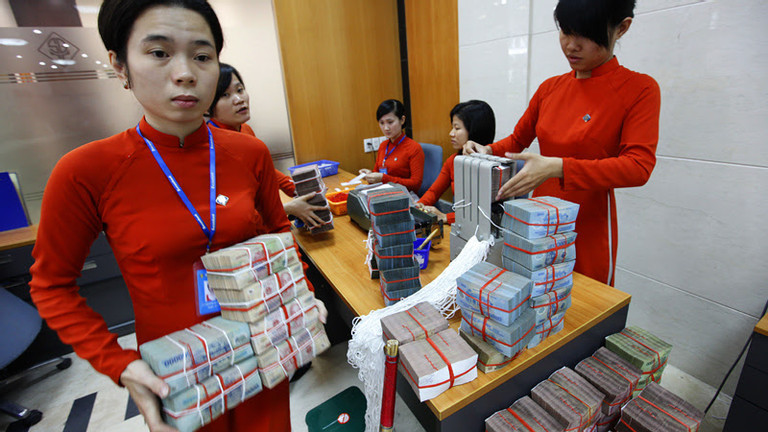
On business forums, one can read optimistic comments about increasing demand in the national economy and a recovery in investment, exports and consumption.
But in fact, total demand has not recovered, exports continue to decrease, and the number of businesses leaving the market is on the rise because of the lack of orders.
Businesses are facing many difficulties trying to scale up investment and business. People have cut their spending. The markets for real estate, securities and corporate bonds have shrunk. How can total demand increase in such conditions?
The decrease in total demand is believed to originate from policies based on unreasonable predictions.
In the third quarter in 2022, some economists began warning about high inflation. In an effort to control inflation, Vietnam decided to pursue a tightened monetary policy.
At that time, many economists said there was no need to worry about high inflation, because inflation was imported through the foreign-invested sector and would be re-exported, which turned out be true.
However, businesses have suffered from the tightened monetary policy. Interest rates increased and rose sharply in the last months in 2022, while the gap between the interest rate and inflation rate, between deposit and lending interest rates, was unprecedentedly high.
After Covid-19, businesses needed capital to ensure liquidity and cover increased input costs. In such conditions, the monetary policy should have been loosened. However, policymakers, who insisted on the need to control inflation, tightened monetary policy by raising interest rates and refusing to lift credit growth limits.
A survey conducted by the Vietnam Chamber of Commerce and Industry (VCCI) found that the biggest difficulty that private enterprises faced was lack of access to capital.
The need for capital was the biggest problem of 55.6 percent of businesses in 2022, which was higher than the 34.8 percent in 2019, 40.7 percent in 2020 and 46.9 percent in 2021.
This caused a domino effect on the stock and real estate markets. Credit has become more exhausted than ever, while enterprises’ business operations have become ‘unprecedentedly difficult’, according to the Ministry of Planning and Investment (MPI).
Though interest rates have been cut four times, by 0.5-2 percent per annum, while the deposit and lending interest rates quoted by commercial banks have dropped by more than 2 percent per annum, the ‘money abundance’ disease exists as total demand is too weak. The money supply (M2) grew only by 5.62 percent in the first three quarters of 2023, while it should have increased by at least 9 percent.
The State Bank of Vietnam (SBV) predicted that credit would grow by only 12 percent this year.
Commercial banks want to increase their outstanding loans as they have mobilized huge amounts of money. However, they cannot do this by taking a risk to provide subprime loans.
What are new driving forces for growth?
First, speeding up disbursement for public investment is needed. To date, the disbursement rate is just 65.1 percent. Second, it is necessary to disburse the VND1 quadrillion of the state budget which is being locked out at SBV, said Pham Xuan Hoe, an economist.
Third, it is necessary to cut taxes, fees and charges to stimulate demand. Fourth, restoring investors’ confidence in the bond market is also needed.
Tu Giang